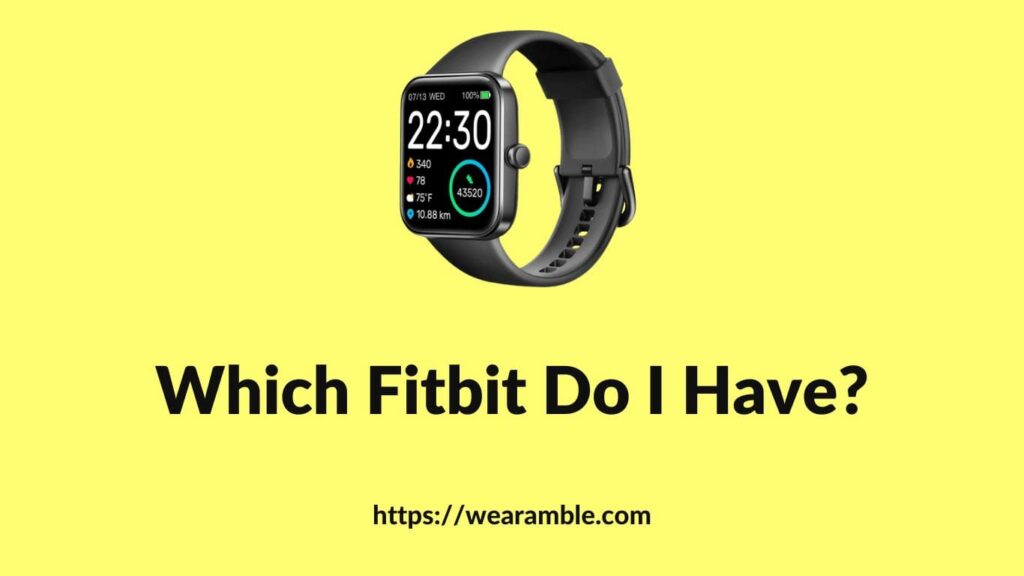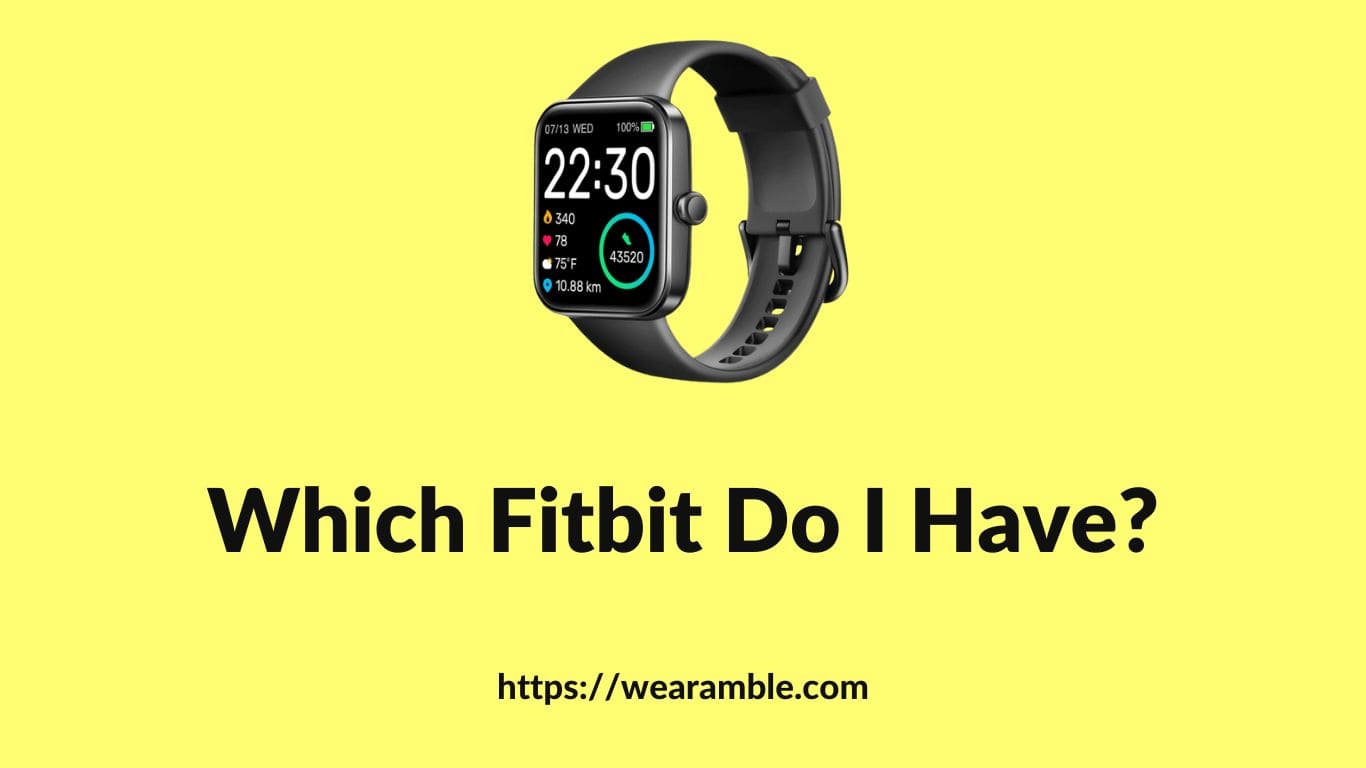Embarking on a journey with Fitbit, understanding your model is not merely a prerequisite but a gateway to unlocking its full potential, from the initial setup process to exploring its myriad of features.
Whether you’re selling an old device or troubleshooting unexpected errors, knowing your model is pivotal. Fitbit, renowned for its fitness trackers, also offers devices with smartwatch functionality, each model presenting a unique blend of features and utilities. Thus, let’s delve into the essence of identifying your Fitbit model, ensuring a smooth and informed user experience.
Which Fitbit Do I Have?
In the realm of Fitbit, identifying your device model can sometimes be as straightforward as checking the package box or recalling your shopping history on the eCommerce site where the purchase was made. The model name is often prominently displayed in both scenarios, providing an almost immediate answer to the query at hand. However, when these initial solutions fail to resolve the dilemma, the quest to find your Fitbit model name and number doesn’t end there. There are more ways, technical and otherwise, to unearth this information, ensuring you are never left in a quandary.
Navigating through the Fitbit app, when your device is already linked, presents a straightforward path to discovering your model name. The app, designed with user-friendliness in mind, displays the connected device and its model name under the profile icon. For those seeking the model number, a quick Google search with the device name should suffice.
In instances where the Fitbit device is not connected to the app, fear not, for the device itself can be a treasure trove of information.
Navigating through the settings and exploring the ‘About’ and ‘Regulatory info’ sections can reveal the model number, which can then be searched online to ascertain the model name.
For those embarking on the initial setup and faced with the requirement of the model number, Android Fast Pair comes to the rescue, especially since the acquisition of Fitbit by Google.
Bringing your device near an Android phone (running Android 8 or above) should prompt the setup process, revealing the model name and facilitating a seamless setup through the Fitbit app.
Moreover, when all else fails, the Fitbit products page stands as a reliable sentinel, allowing you to compare your device with listed products, providing at least a basic understanding of your model.
Alternatively, employing Google Lens to scan your Fitbit can also unveil the model name, albeit with varying reliability.
How to Know What Fitbit Model Do I Have?
1. Using Fitbit App:
Discovering Through the App:
If you’ve connected your Fitbit device to your phone, the Fitbit app is your go-to solution. Whether you’re on Android or iOS, the process is straightforward:
- Step 1: Launch the Fitbit app on your phone.
- Step 2: Tap on the profile icon located in the top left corner. This will lead you to your account details.
- Step 3: Here, you’ll see the device that’s connected to your account, displaying its model name.
- Step 4: If you’re more interested in the model number rather than the name, a quick Google search with the format “Fitbit Device Name + Model Number” will provide the desired information.
2. Using Fitbit Device:
Directly From the Device:
If your Fitbit isn’t connected to a phone, fret not. The device itself holds the answers:
- Step 1: Wake up your Fitbit device and swipe left to explore the apps.
- Step 2: From the list of apps, select the “Settings” app.
- Step 3: Within Settings, scroll until you find the “About” option and select it.
- Step 4: Dive deeper by selecting “Regulatory info”.
- Step 5: Here, the model number will be prominently displayed at the top. It’s typically a 5-digit code starting with “FB” followed by three random numbers. For instance, Fitbit Sense has the model number “FB512”.
- Step 6: To convert this model number into a model name, a simple online search will do the trick instantly.
3. Use Android Fast pair:
When Booting for the First Time:
Sometimes, especially when booting your Fitbit for the first time or after a reset, you might find yourself in a situation where the model number isn’t immediately available on the app or device. Here’s a workaround:
- Step 1: Power on your Fitbit. You should notice a download icon.
- Step 2: Bring your Fitbit close to an Android phone that’s running Android 8 or above.
- Step 3: Your phone should prompt you with the setup process, conveniently displaying the model name.
- Step 4: Tapping on this prompt will initiate the download of the Fitbit app and seamlessly begin the setup process.
4. Check the Fitbit Products Page:
When All Else Fails:
If you’ve tried the above methods and still can’t determine your Fitbit model, the Fitbit products page might be your last resort:
- Step 1: Navigate to the Fitbit products page.
- Step 2: Compare your device with the displayed products. While some models might bear a resemblance to others, you can usually discern a basic idea of your model.
- Step 3: As an alternative, use Google Lens to scan your Fitbit. This might provide the model name, though it’s not always 100% reliable.
Frequently Asked Questions (FAQ):
Which Fitbit does not have a button on the side?
In 2020, Fitbit introduced the Versa 3, an iteration that embraced a smooth side without a physical button. The absence of this button, replaced by an indentation, marked a subtle yet significant shift in design, offering a sleek and streamlined aesthetic to the device, diverging from previous models and their physical side buttons.
The Versa series, renowned for its iterations, has evolved in its design approach. Particularly, the Versa 3, with its smooth side indentation instead of a physical button, showcased a new era in Fitbit’s design philosophy, prioritizing sleekness and a minimalist aesthetic, which was notably apparent in the 2020 release.
Are Fitbits actually worth it?
Fitbit trackers, celebrated as excellent devices, have carved a niche in monitoring overall activity and health. They adeptly track wellness metrics, providing a comprehensive view of one’s health, from EKGs to blood oxygen levels, making them a worthy investment for those keen on maintaining a healthy lifestyle.
For hardcore athletes, a Fitbit is more than a mere device; it’s a companion in tracking their overall activity, health, and wellness. The metrics provided, from EKGs to blood oxygen levels, offer a detailed insight into their physical state, affirming that these devices are indeed worth considering for their comprehensive tracking capabilities.
What is the most recommended Fitbit?
When it comes to recommended Fitbits, the picks vary. The Fitbit Charge 5 takes the crown for Best Overall, while the Fitbit Luxe is favored by Women. Men might lean towards the Google Pixel Watch, and for Kids, the Fitbit Ace 3 is a popular choice. Sleep Tracking is mastered by the Fitbit Versa 4.
The Fitbit Sense 2 is a runner’s dream, offering detailed metrics to enhance their training. For those on a Budget, the Fitbit Inspire 3 offers excellent tracking without breaking the bank.
Each recommended Fitbit caters to different needs, ensuring that whether it’s overall wellness, sleep tracking, or budget-friendly options, there’s a Fitbit for everyone.
Conclusion:
From utilizing the Fitbit app and exploring the device settings to leveraging Google Lens and the Fitbit product page, identifying your Fitbit, be it a smartwatch or a fitness tracker, is rendered a hassle-free process. Thus, with knowledge as your ally, navigate through the realms of Fitbit, exploring, utilizing, and troubleshooting with confidence and ease.
